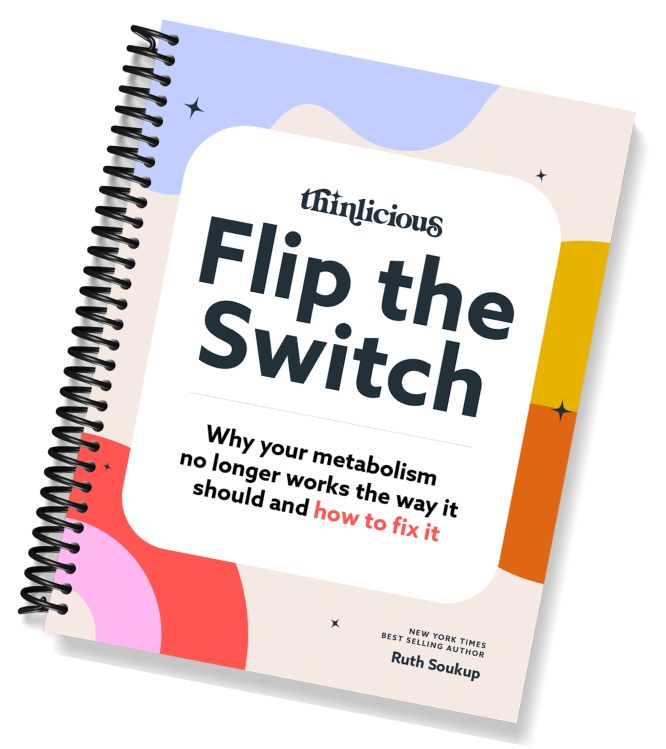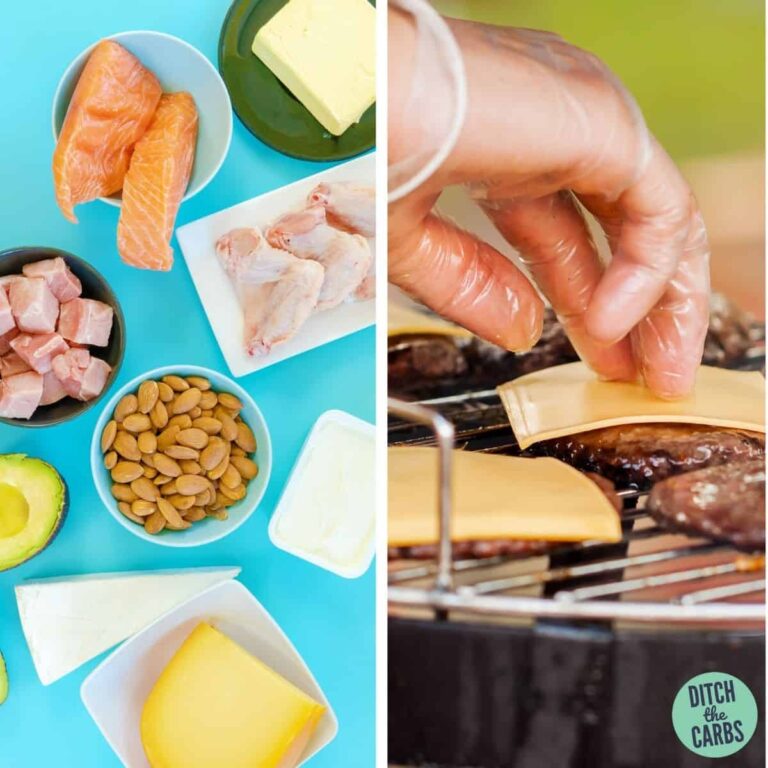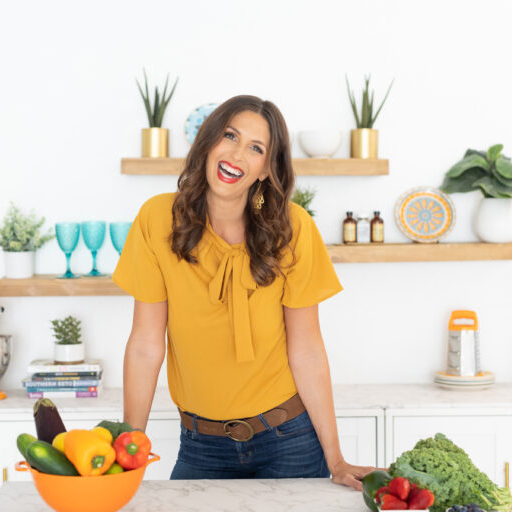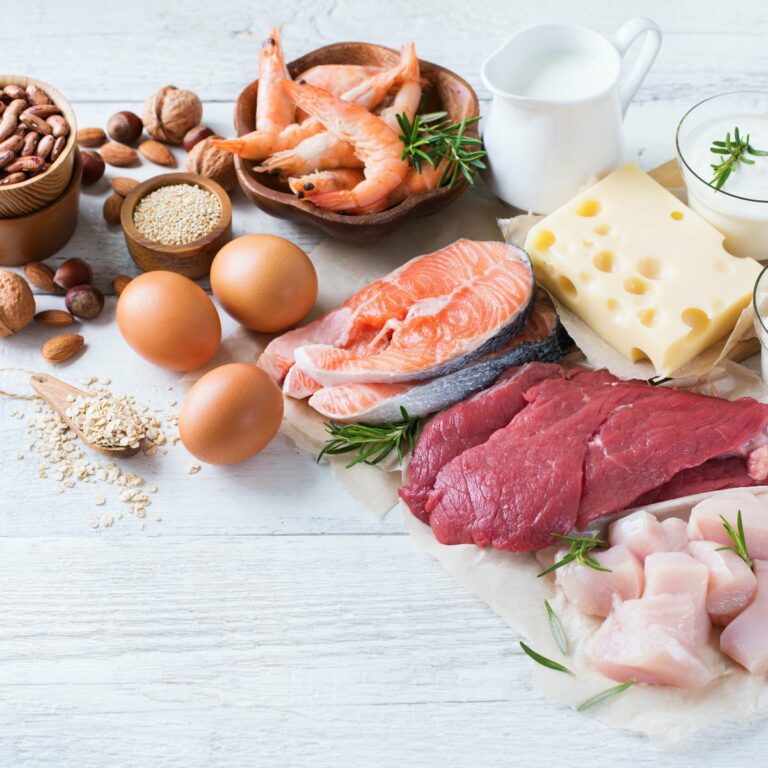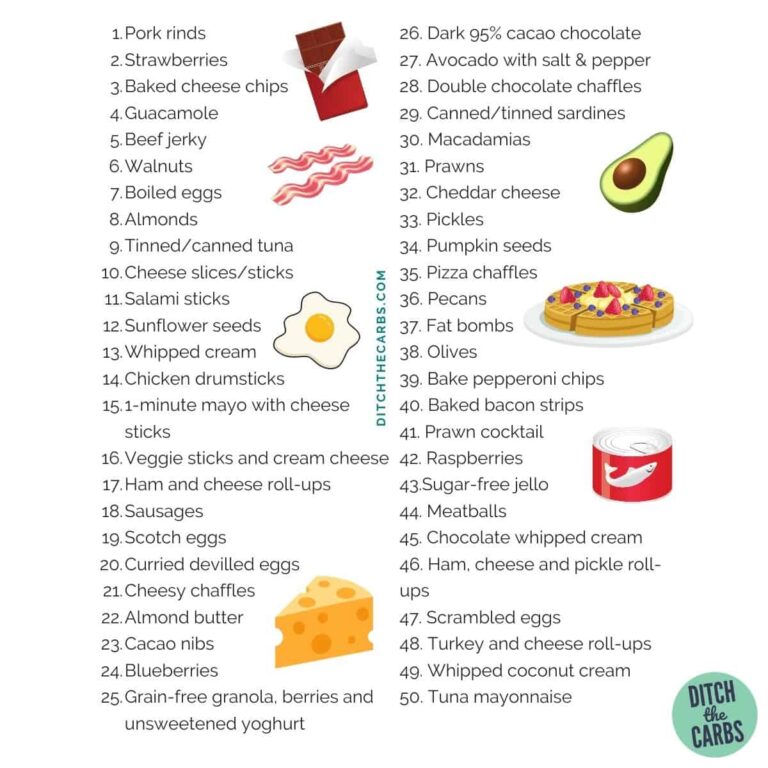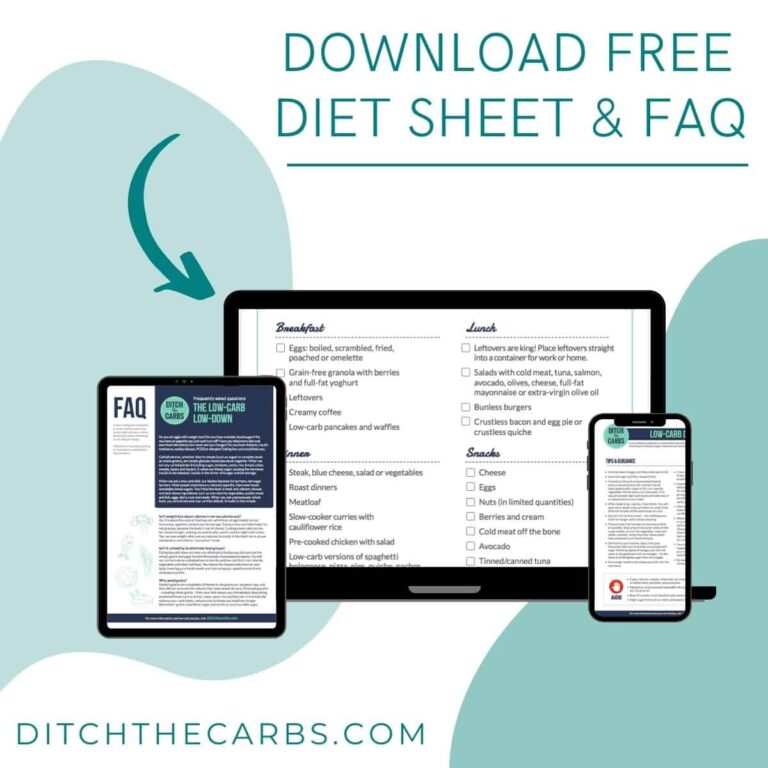Let’s be real for a minute, shall we? The cost of food these days is downright insane.
And that’s scary for all of us, but it’s ESPECIALLY frustrating when you’re wanting to commit to a healthier lifestyle but it honestly feels like you might have to take out a 2nd mortgage just to afford your grocery bill.
Is there really a way to eat healthy AND still keep your food budget in check?
I say yes, and today my goal is to prove it to you.
Are you ready to lose weight and heal your body for life (without dieting, drugs, or making yourself miserable)?
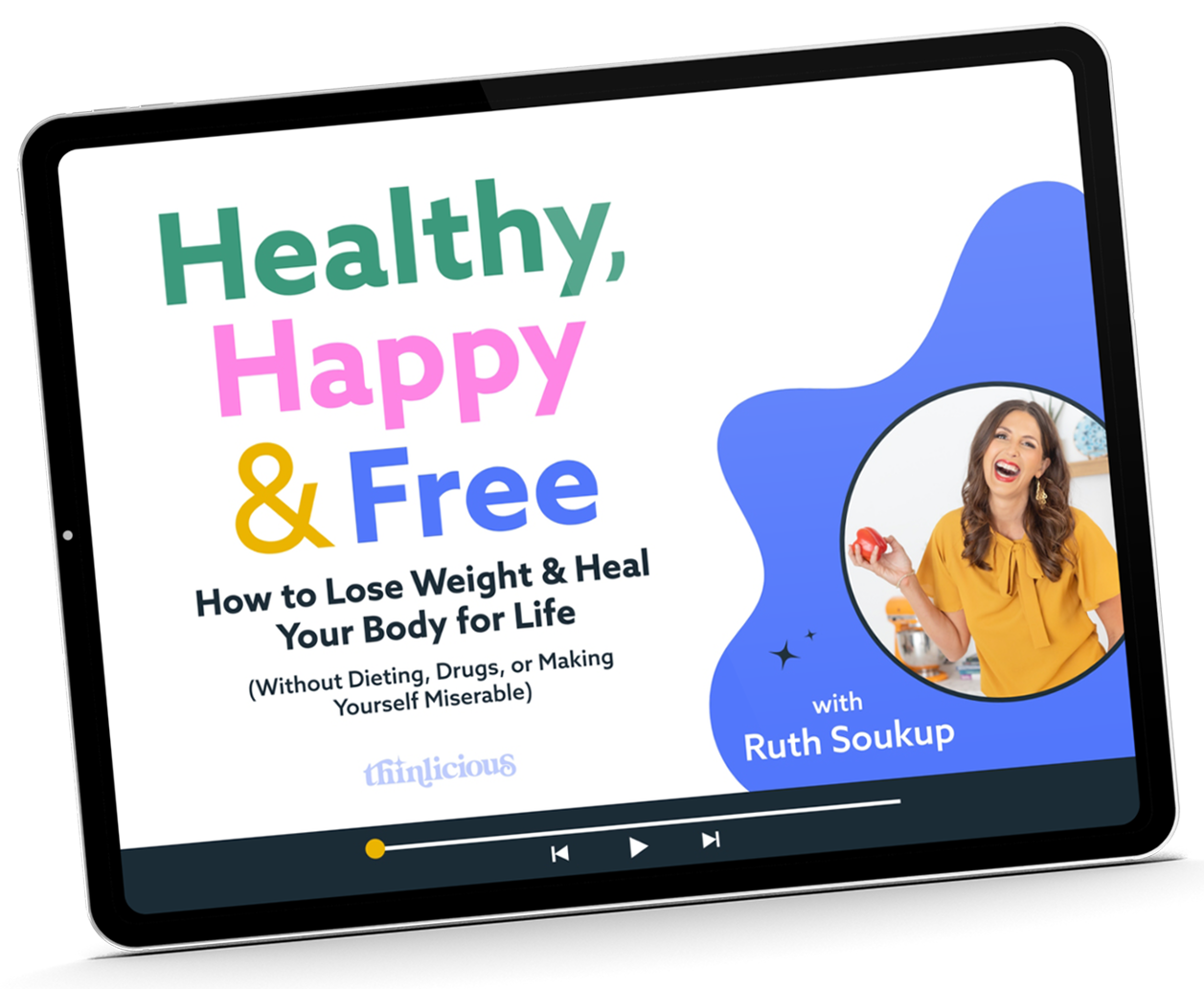
Our free on-demand video training will walk you through how to make this THE year you set health goals…and keep them.
But I’ll start with the bad news first: eating healthy IS likely going to be more expensive than eating junk food or processed food. There’s just no getting around that. The healthiest, most nutrient-dense foods in the world—whole foods like high quality meat and fresh vegetables and fresh fish and dairy—those things are always going to cost more than a burger from the dollar menu or a bag of potato chips or a box of macaroni and cheese.
But here’s the good news: healthy eating doesn’t have to break the bank.
Because honestly, the journey to lose weight and get healthy can be hard enough without the added pressure of trying to figure out how to afford it, right? The effort it takes to start to change your habits, and the learning that is required to truly understand the science of what different foods are doing to your body and how it all affects your hormones, and then the mindset work that’s required to overcome food addiction and emotional eating and all the other stuff.
So maybe if we can make this one little piece feel more practical and doable, everything else will feel a little bit easier.
Even so, it’s important to know that success in this area is going to start with the stories you decide to tell yourself about money and whether it is actually worth it to invest in eating the right things.
Because, as our Thinlicious Physician Advisor, Dr. Edie Wadsorth, likes to say—you can either pay the farmer now, or pay the doctor later.
What you sacrifice now in order to make your health a priority WILL pay off in the long run. Ultimately, being healthy is MUCH more affordable than not being healthy.
But it might now feel like that in the moment.
And so changing the story that you tell yourself really is the first step.
But if you ARE ready to make healthy eating a priority in your life, then the really good news is that there are actually a lot of practical strategies you can use to keep costs down. So let’s dig in.
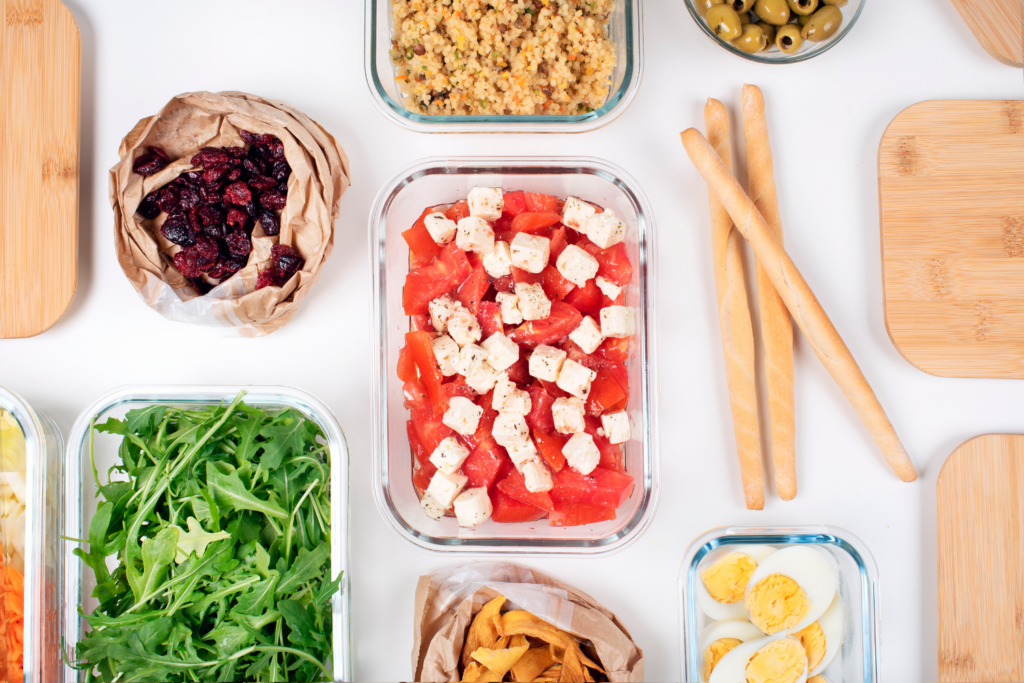
Actually Use the Food You Buy
So the first tip I have for you is probably a little bit obvious, but it’s something that I think most of us probably don’t do a very good job of, and that is to actually USE the food you buy.
I know that might sound kind of silly and basic, but honestly, I can’t even tell you how often I find myself cleaning out my fridge and throwing away food that has gone bad or that I forgot was in there or that I just didn’t get around to cooking in time.
It’s such a waste of money, and yet it’s something that so many of us do on a regular basis. In fact, food waste is a huge problem in the United States, with the average American throwing away between 20-25% of all the food they buy. And that’s just crazy to me, especially when so many people are struggling to put healthy, nutritious food on the table for their families.
And if this is something that you struggle with too, then I would say that the first step in saving money on your grocery bill is just to be more mindful and intentional about actually using the food you buy. That means planning your meals in advance, and making a shopping list, and only buying what you know you’ll actually eat. It also means being realistic about how much food you and your family can actually consume in a week, and not buying more than you need.
If you’re new to meal planning, then honestly, that’s probably the best place to start. Just take a little bit of time at the beginning of each week to sit down and plan out what you’re going to eat, and then make a list of all the ingredients you’ll need to buy. And then, of course, actually USE the food that you buy. Don’t let it sit in the fridge and go bad. And if you do have leftovers, make sure you’re actually eating them, and not just throwing them away.
And that might mean getting a little bit creative with how you use your leftovers. For example, I love to make big batches of roasted vegetables, but obviously we can’t always eat an entire tray of roasted veggies in one meal. So one of my favorite things to do is to use the leftovers for other meals throughout the week. I’ll throw them in a salad, or mix them in with scrambled eggs, or puree them in the blender and use them as a base for a soup. They’re such an easy and delicious way to add a lot of flavor and nutrients to a meal, without having to do a ton of extra prep work.
Shop Your Own Pantry and Freezer
The second tip have is to make a habit of shopping your own pantry and freezer first, before you head to the grocery store.
I know this one might sound a little bit obvious too, but it’s honestly something I didn’t used to do very well. I would always make a shopping list and then head to the store, and I’d buy all the things on my list, but then I’d come home and realize that I actually already had a lot of those things in my pantry or my freezer, I just didn’t remember.
It was such a waste of time and money, and it’s something that’s so easily avoidable. So now, before I head to the store, I always make a point to check my pantry and my freezer and see what I already have on hand. And then I try to plan my meals to use up as much of that stuff as possible, so that I’m not buying a bunch of extra ingredients that I don’t actually need.
And honestly, it’s amazing how much that simple little thing can save you, especially if you’re actually making an effort to eat down some of the things you already have on hand. For example, if you notice that you have a lot of frozen vegetables in your freezer, then you can plan to use those up for several meals in a row, or even for an entire week.
Or if you see that you have a lot of cans of tuna in your pantry, you can plan to have tuna salad for lunch a few times, or to make a big batch of tuna casserole for dinner one night. Or if you notice that you have a lot of chicken broth or vegetable broth, you can plan to make a few different soups throughout the week.
You get the idea. Just be more mindful of what you already have on hand, and make a plan to actually use that stuff up before you go buy more. It’s such a simple thing, but it can really make a big difference in how much you’re spending on groceries each month.
Shop the Sales (and Stock Up)
My third tip goes straight back to my days as an Extreme Couponer, where I learned the biggest secret of the grocery industry that very few people understand—EVERYTHING goes on sale, at least eventually! And not only that, MOST foods go on sale in a regular rotation, about once ever 6-8 weeks, on average.
That means that over time, if you are smart and strategic about WHEN you buy your foods, you can literally slash your grocery bill by as much as a third or more, simply by stocking up on foods you buy when they are on sale, so that you have enough to last you until they go on sale again.
Basically you make it your goal to always buy your food when it is at the lowest possible price—aka the rock bottom price—and then buy enough to last until it goes on sale again.
And if you’re already planning your meals around what you have in your freezer and pantry, like we talked about a minute ago, then this works out really well. You basically have your own little mini-grocery store at home, already stocked with the foods you eat most, full of food you bought when it was at its cheapest.
You with me so far?
So let’s use an example to make this make sense.
Okay, so let’s say REAL butter is something you use a lot of, because well, we need more healthy fat in our diet, right? But in case you haven’t noticed, real butter is EXPENSIVE these days! I don’t know how much it is by you, but here in Florida it is something like $6 a POUND now for butter, which is just insane to me.
But every so often—every couple of months—butter goes on sale. And here in Florida, we have a store called Publix, which is known for it’s weekly BOGO sales—buy one get one free. So when butter goes BOGO, you better BELIEVE that we stock up like crazy, because we go through a LOT of butter. Typically we will buy enough to last until the next time it goes on sale, and maybe even a little extra just in case, because we know we can just keep it in the freezer.
So instead of buying 2 pounds of butter to last the week, we’ll buy 16 pounds of butter at half off. We only ever pay $3 a pound for butter.
And if the Challenge brand butter goes on sale, then we’re doing even better, because every box of Challenge butter has a coupon for $.55 off, which means that we can get each pound of butter for just $2.45, since you can use the coupon on the free item also.
$2.45 instead of $6 is huge savings, right? And if you multiply that by 104, which is probably how many pounds of butter my family uses over the course of a year, you’re saving $369.20 on ONE ITEM.
Now think about how much you could save if you applied that same tactic to EVERYTHING you buy—meat, chicken, cheese, eggs, vegetables, dairy products…..It starts to add up pretty fast, right?
I promise you there is almost NOTHING you buy—even healthy, whole foods—that doesn’t go on sale at least once in a while, and more than likely goes on sale regularly. You’re just mostly buying it at the wrong time, right when you need it, instead of when it’s cheapest.
It’s basically just a different way of shopping. Instead of making your meal plan, then making your grocery list, then going to the store and buying what you need, your process looks more like looking looking at what you have on hand, making a meal plan to utilize as much of THOSE items as possible, then when you go to the grocery store, stock up on the foods you normally eat that are on sale.
And again, this might not feel like you’re saving a bunch of money in the short term, but over time, if you do this consistently, you’ll actually spend a lot LESS on groceries, as long as you’re actually using what’s in your pantry and freezer and not letting food go to waste.
Get Smart About Food Storage
My fourth tip for saving money on healthy food is to get smart about food storage. This may seem like a small detail, but it can actually make a big difference in the longevity of your food and how much you end up throwing away.
Properly storing food can help prevent spoilage and extend its shelf life, saving you money in the long run. And if you’re going to stock up on food items while they’re on sale, you should know how long certain foods will stay good, or whether you can freeze them.
There are actually a ton of foods that can be frozen—even things like eggs and cheese and dairy, not to mention fresh vegetables and fruits. And if you’re not sure how to properly freeze something, a quick Google search can usually tell you the best method.
Once you know which foods can be frozen and how to do it, you can start taking advantage of sales on those items and stocking up for later use. Just make sure to label your containers or freezer bags with the date so you know when they were frozen, and use the oldest items first to prevent waste.
You may also want to consider investing in a vacuum sealer or quality food containers to help keep your food fresh and avoid freezer burn, and to get a 2nd refrigerator or freezer if you don’t have one. Facebook marketplace is full of people giving them away for next to nothing!
Also, don’t forget to properly label and rotate your foods so that you’re using the oldest items first. By taking the time to properly store your food, you’ll not only save money but also ensure that your healthy purchases stay fresh and delicious for longer. Plus, it’s better for the environment too!
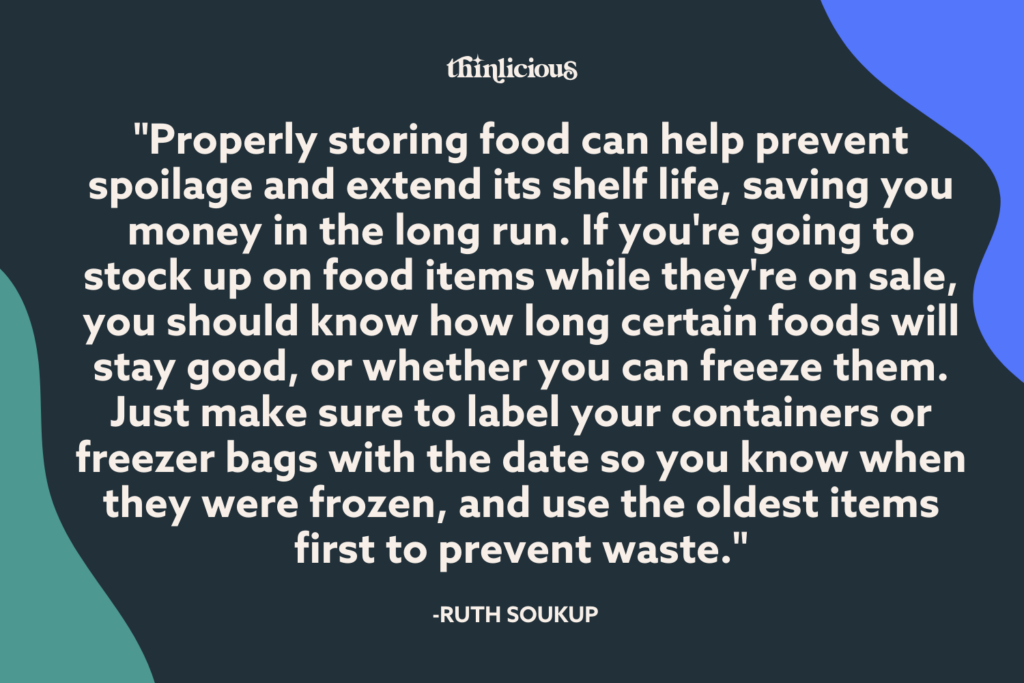
Go Straight to the Farm
My fifth tip is to skip the grocery store and go straight to the farm!
And by this I mean to try to buy as much of your food as you can from local farmers and farmer’s markets. Because the reality is that not only are the prices often a lot cheaper, but the food is also a lot better for you. The meat is usually grass-fed and pasture-raised, and the vegetables are usually organic and locally grown. And it’s usually a lot more fun to shop at a farmer’s market than at a big grocery store.
Many local farms will provide an option for buying a whole or partial cow that can provide months worth of high-quality meat.
Another great option, if you can find it, is a local farm that provides produce subscription boxes during harvest season. It’s not only a fun way to try fresh produce you might not normally think to buy, but it can also be super cost effective.
And I love knowing that the food we’re buying is not only delicious and healthy, but also locally grown and in season.
And honestly, that’s another great tip—try to eat as much in-season produce as possible. Because it’s usually a lot cheaper when it’s in season, and it’s also a lot better for you. Plus it just tastes better!
And speaking of in-season produce, another great way to save money is to GROW YOUR OWN.
Because honestly there’s nothing more satisfying than being able to walk out your back door and pick your own fresh herbs and vegetables. And honestly, it’s a lot easier than you might think. Just start with a few herbs in pots on your patio, and then maybe a few tomatoes or cucumbers or zucchini. And then you can always expand from there.
And if you don’t have a yard or a lot of space for a garden, then consider joining a community garden or starting a vertical garden on your balcony. There are so many options!
So getting ultra local, whether it’s your own mini-farm or one close by is a great way to get the freshest, healthiest, and most nutrient dense food out there at a fraction of what the grocery stores charge.

Cook in Bulk
My final tip is not only a money saver, but a time saver too, and that is to cook in bulk.
I love recipes that can be doubled or quadrupled and then frozen for when you need them. In fact, back on Living Well Spending Less, I did an ongoing series called 10 Meals in an Hour where I provided meal plans, shopping lists, and instructions that would allow you to whip up 10 easy, budget and freezer friendly meals in about an hour.
After I started Thinlicious, I adapted many of these tried-and-true recipes to be much healthier, and if you’re looking for inspiration, you can find most of the healthier versions on the Thinlicious website, including our Pesto Chicken, Greek Chicken, Sloppy Joes, Coconut Lime chicken, Pulled Pork, Honey Dijon Chicken, and our Pot Roast, just to name a few.
It’s a great option for when you find a great deal on chicken or ground beef or pork and want to have something on hand for busy nights when you might be tempted to just order takeout.
When I find chicken on sale I also love to do a big batch on the grill, then let it cool and slice it up to have on hand for soups, salads, casseroles, or just a quick snack. It freezes great too, and you can always heat it up quickly in the oven or air fryer.
I also love roasting up a big batch of vegetables to keep on hand—these freeze great, and are perfect for adding to frittata, casseroles, or just heating up in a pan as an easy side dish.
Honestly I could probably keep going for hours, because as you can probably tell, this is a topic that is near and dear to my heart, and that I’ve been teaching on for a very long time.
But hopefully after today, you at least have a few ideas to get you going on lowering your food costs.
Because while I’m not going to deny that the price of food has gotten a little bit crazy, I also believe that it’s more than possible to eat well while sticking to a budget.
And I also believe that your health is worth it.
Got any money saving tips of your own to share? Please leave them below!
Get our FREE guide to finally fix your metabolism!
Losing weight & getting healthy is never easy, but lately you might feel like it’s suddenly become impossible.
Our Flip the Switch guide will help you clearly understand what’s been going on, as well as exactly what you can do to get your metabolism working again so that you can look and feel your best—it’s easier and more simple than you think!
